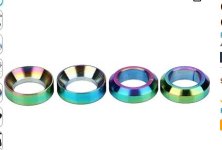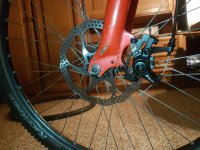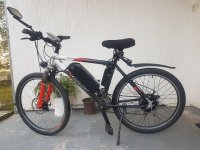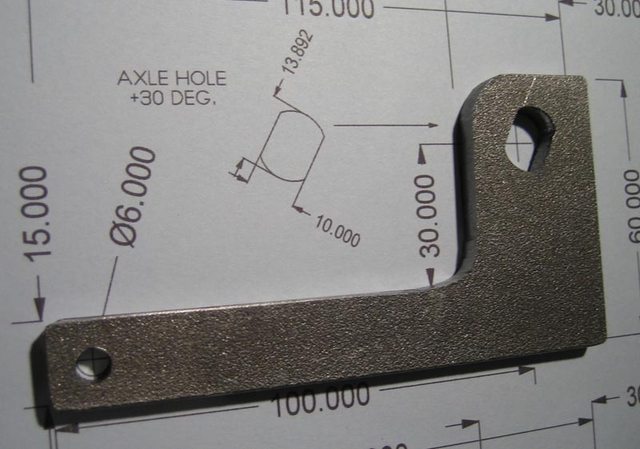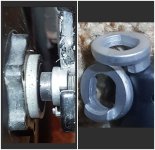Not sure what you talking which thin disc tab :/
Rear brake can't lock wheel in breaking:
I bought lower adapter (it says 180/160 like already have, but it is lower). Placed washers from above and sides and longer screws. Now I think that pads are cover the entire surface on disc.
It breaking, but still on break I can't lock rear wheel on asphalt, which means that I not have 100% stoping power (Note that Zoom brakes have double pistons). Right brake handle still have 25% space between.
Also, I asked here about not full coverege pads and did not get answer of you. So I continue drive like this and
after 100km of drive with no full cover pads on disc, I got this shape on pads, like on picture, not same, but similar.
Where is problem? In this video he can lock wheel with Zoom mechanical disc brakes easy.
VIDEO
Is my fake? Must I clean disc? Must drive it more? I can change new Zoom pads before install front brake, but think will be same.
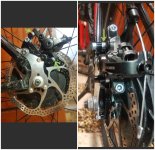


Rear brake can't lock wheel in breaking:
I bought lower adapter (it says 180/160 like already have, but it is lower). Placed washers from above and sides and longer screws. Now I think that pads are cover the entire surface on disc.
It breaking, but still on break I can't lock rear wheel on asphalt, which means that I not have 100% stoping power (Note that Zoom brakes have double pistons). Right brake handle still have 25% space between.
Also, I asked here about not full coverege pads and did not get answer of you. So I continue drive like this and
after 100km of drive with no full cover pads on disc, I got this shape on pads, like on picture, not same, but similar.
Where is problem? In this video he can lock wheel with Zoom mechanical disc brakes easy.
VIDEO
Is my fake? Must I clean disc? Must drive it more? I can change new Zoom pads before install front brake, but think will be same.



Last edited:


